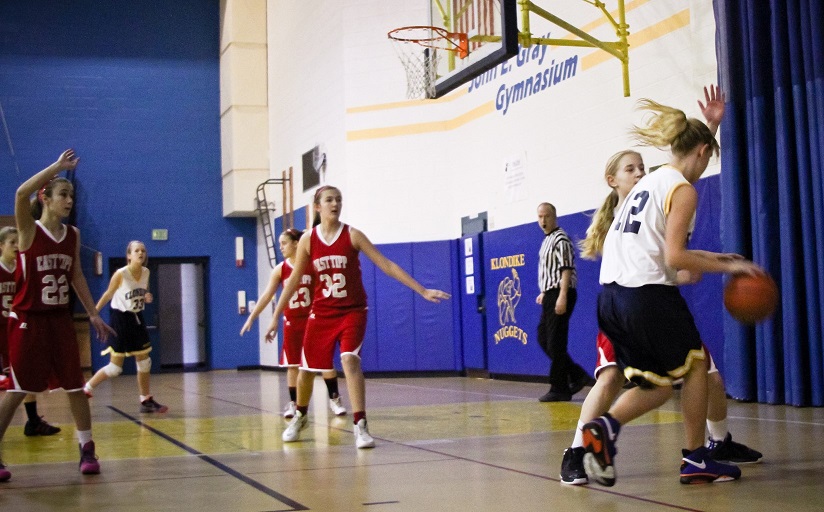
New concepts are required for the development of basketball skills. For a long time, the basketball skill training industry has been a significant participant in the overall basketball landscape. The vast majority of shooting trainer basketball has had a positive impact on the basketball landscape. Athletes of all skill levels are improving their ability to do the greatest basketball shooting routines. Basketball skill training has also been beneficial to team coaches, who are typically hampered by restrictions and time constraints in their duties. Dedicated individual skill development coaches assist athletes of all abilities in improving their performance by concentrating on particular, distinct skills training.
The reality is that basketball skill instruction has traditionally been based on particular viewpoints that have seldom been questioned. The ability to receive advice on a variety of topics from others is a crucial component of coaching. The benefit is that instructors were able to take ideas from anybody and everyone. The most serious problem is that most of these notions are never changed or called into question. This is especially true in the domain of skills training, where coaching beliefs have been accepted and communicated to athletes without taking into account a number of essential aspects in the development of talent.
A heavy focus on isolated one-on-one ball-handling and finishing moves have always been placed on basketball skill training. Where ideas have been developed, expanded upon, and reinforced with new knowledge, there have been extremely few to no revisions. This never-ending process is repeated again and over. This is tough because it suggests that innovation is inhibited and that players and teachers are always trapped in the same pattern, which is difficult to accept.
The General Understanding of Basketball Skill Training
The problem is that what skills training is thought to be is influenced by this perception. The majority of skill training takes the form of specialized instruction focused on strategy development in highly specialized tailored situations such as ball handling, mid-range shooting, and finishing skills, among others. Specifically, improving specific technique steps in these relative niche sectors accounts for just a very small fraction of an individual player’s total game growth.
Because certain skill sets are used seldom in matches, this is primarily due to the infrequency with which they are used. For example, how important is it for an athlete to be able to perform a three-dribble combination move vs. being able to navigate with their weaker hand under pressure from an opponent while playing basketball? As an example, consider the difference between a player completing from the air and a player finishing from a specified location with a defensive player crossing the field to help out.
Player Development vs. Skill Training
When it comes to player development, we prefer the term “player development” over “skill training.” Some people may dismiss it as meaningless jargon, but we place a high emphasis on the difference. Player development is a specific and all-encompassing technique that involves many different aspects of shot trainer basketball. The system takes into account a variety of other factors that impact a player’s growth. Moreover, it avoids the duplication of highly contextualized maneuvers that are routinely communicated on-air and in isolation. Player development comprises the following activities:
- Athletic development is essential because it affects players’ muscular strength, resilience, synchronization, and other characteristics that are necessary to complete certain technical stages effectively.
- When analyzing diverse circumstances and subsequently responding (or not responding) to the scenario, sensory talents are required. It is also referred to as perception-action integration in certain circles.
- When it comes to fitness, a player’s private life, which includes their school and family situations, will indeed have an impact on their mental process and performance. This may consist of incorporating mindfulness practices into the player development process.
Situational Development vs. Move-Based Improvement
When compared to situation-based skill training, move-based talent development is more widespread. When it comes to various skill training syllabuses that are employed by skill teachers, this is the most serious problem. Instead of being based on situations, the curricula are centered on movement. While it is clearly more beneficial for athletes to learn isolated on-air moves, it is undoubtedly more beneficial for them to establish a set of knowledge that enables them to achieve success in more typical game settings. The goal is to present players with a variety of alternative responses to select from in both familiar and unfamiliar circumstances.
The ability to transmit all move-based talents to the same athletes while completely discarding the concept of specialization in training is another problem for skilled trainers. In a small-group setting, it is possible to use specialized training principles; nevertheless, it is necessary to organize basketball shooting practice exercises in a methodical manner to achieve this result.
Small-Group vs. Individual
Small group sessions are the initial step in creating a player development environment that helps players transfer their skills from training to gaming. Developing comprehensive game-like, task-representative environments might be challenging when working with individuals’ individual workouts. Even for parents who feel their kid gets more attention in one-on-one sessions, this might be difficult to grasp. Consequently, parents must be educated on the benefits of the small-group practice.
When it comes to job-specific training, small groups are typically employed. Point guards cooperate with other point guards, defenders collaborate with other defenders. Despite the tremendous expansion of position less basketball, there are still positions in basketball. Position less and integrated practice, on the other hand, is the most effective methods for developing players. As a coach, it’s your job to make sure your team’s players are playing in the best position for them.
As much as feasible, a teacher of a young basketball player must help them improve their personal shooting workouts in order for them to be ready for their team’s next assignment. Furthermore, separating athletes by position prevents them from developing the skills they need most during games: interacting with their teammates.
Are you saying that alone exercises are useless? Not at all. Some of the benefits are greater than others. Small-group training, team practices, and games are the greatest ways to figure out what a player needs to work on and whether they need to enhance their on-air abilities separately. The context of the problem and the reasoning behind the solution must be clear.
The finest shooting workouts for basketball that do not aid and support the athlete are more common in individual practice than in group situations.
Conclusion:
There hasn’t been a lot of clarity in the training business on what constitutes a skills trainer or a basketball shot trainer. There are specific skills trainers that specialize in only one or two areas. It’s possible that they’ll show you how to shoot or dribble. Then there’s the option of working with a player development coach, who will instruct you in all aspects of the game. If you’re doing one or the other, you’re trying to get kids to play at all levels, from elementary school through college.




More Stories
Why Participate in the Birmingham Half Marathon?